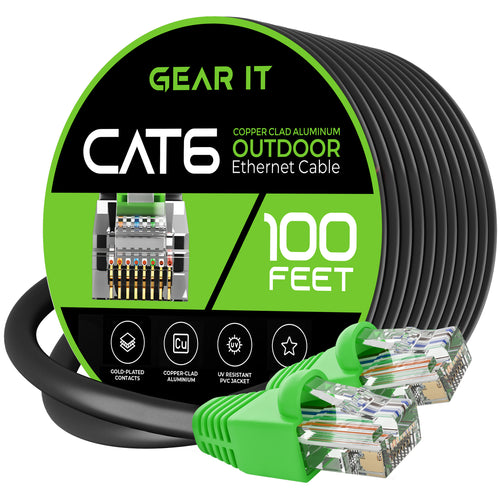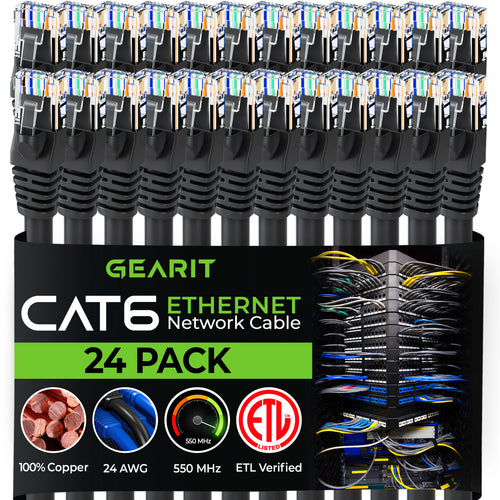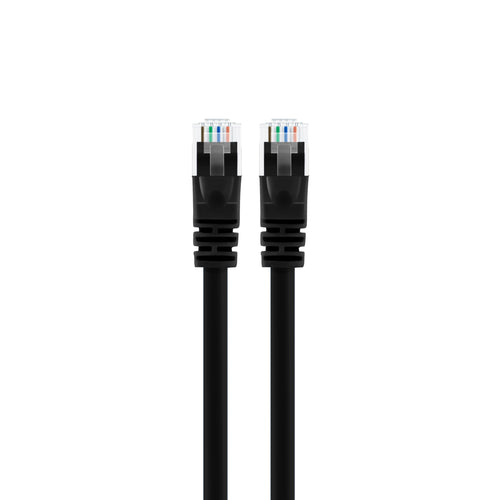
When it comes to setting up a reliable and efficient network, choosing the right type of Cat6 Ethernet cable is crucial. Two common variants available in the market are solid and stranded Cat6 Ethernet cables. Understanding the differences between these cable types will help you make an informed decision and ensure optimal network performance.
Solid Cat6 Ethernet Cables:
Solid Cat6 Ethernet cables consist of a single solid copper conductor, which offers better performance over longer distances. These cables are more rigid and inflexible, making them ideal for permanent installations in walls, ceilings, or conduit pathways. The solid core provides excellent signal integrity and minimal signal loss, resulting in superior data transmission capabilities.
Advantages of Solid Cat6 Ethernet Cables:
- • Enhanced Performance: Solid cables exhibit less signal attenuation, enabling data to travel longer distances without degradation.
- • Long-Distance Runs: They are best suited for horizontal cabling in office buildings or data centers, where long cable runs are common.
- • Lower Cost: Solid cables are generally less expensive than their stranded counterparts.
Limitations of Solid Cat6 Ethernet Cables:
- • Limited Flexibility: Their rigid structure makes them less flexible and unsuitable for applications that require frequent movement or bending.
- • Susceptibility to Breaks: Solid cables are more prone to breakage when subjected to excessive bending or twisting.
Stranded Cat6 Ethernet Cables:

In contrast, stranded Cat6 Ethernet cables are made up of multiple thin copper strands, which offer greater flexibility and resistance to stress and bending. Due to their pliability, they are commonly used in situations where frequent cable movement is required, such as patch cords or connections between networking devices.
Advantages of Stranded Cat6 Ethernet Cables:
- • Flexibility: Stranded cables are highly flexible, making them ideal for patch cords or applications requiring constant movement.
- • Durability: They are less likely to break or suffer damage due to their ability to withstand bending and twisting.
- • Easy to Terminate: Stranded cables are easier to terminate and install on connectors, requiring less effort during setup.
Limitations of Stranded Cat6 Ethernet Cables:
- • Shorter Cable Runs: Stranded cables may exhibit slightly higher signal loss over long distances compared to solid cables.
- • Cost: Stranded cables are typically more expensive than solid cables.
Choosing the Right Cable for Your Needs:
Selecting the appropriate cable type depends on the specific requirements of your network setup. If you need to run cables through walls, ceilings, or conduit over long distances, solid Cat6 Ethernet cables are the way to go. On the other hand, for patch cords, connections between devices, or any application involving constant movement, stranded Cat6 Ethernet cables are a better choice.
Understanding the differences between solid and stranded Cat6 Ethernet cables is essential in ensuring the success of your network installation. Solid cables excel in long-distance runs and permanent installations, while stranded cables offer flexibility and durability for applications requiring frequent movement. GearIT offers variety Stranded Cat6 Ethernet Cable Packs for you!





















































